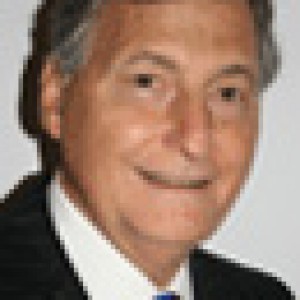Spotlight on Leaders and Trends
Interviews
- Bradley Alder
- Ali Saeed Bin Harmal Al Dhaheri
- Sergey Alexeev
- Sandy Angus
- Albert Aoun
- Marcus Bergstrom
- Stephen Brooks
- Stanley Chu
- Juan Pablo De Vera
- Michael Duck
- Simon Foster
- Renaud Hamaide
- Glenn Hansen
- Peter Neven
- Armando Arruda Pereira de Campos Mello
- Joseph V. Popolo
- Ravinder Sethi
- Lew Shomer
- Dan Spigner
- Amer N. Tabbah
- Yoshichika Terasawa
- Krister Ungerboeck
- Anbu Varathan
- Paul Woodward

Lew Shomer
Interview by Barry Siskind on 25 April 2013
Lew Shomer has been a familiar face at UFI events for years. His wide and diverse background has given him a unique vantage point on face to face events. From his beginnings as a systems analyst with IBM through a career in sales and ultimately to owner of his own company, Lew has earned the respect and admiration of his colleagues, peers and competitors. His warmth and candour came through clearly as we sat down and discussed his remarkable climb up the exhibition ladder.
Barry: Your early career included many sales and marketing positions with companies such as IBM, Computer Investor’s Group and Mohawk Data Sciences. In 1984 you shifted gears and opened your own firm, Shomex Productions. Where does your entrepreneurial spirit come from?
Lew: It was from my family, my grandfather and uncles were all in their own businesses. When I graduated from university, I went into the military service. After that I worked for E.J Korvette – a large retailer in New York while I completed my graduate degree at night. My first real job was with IBM where I started out in systems. After two years I noticed that IBM salespeople were making lots of money. When I tried to sell for IBM, I met with a lot of resistance – I guess they didn’t think I was sales material – so I took a sales job with Honeywell where I became the most successful salesperson in the region.
Honeywell was at the forefront of the computer leasing business and I sold “operational leases.” In 1967 they sent me to Europe where I ran the European operations for one year. Then the next year IBM changed their policy and started to do short-term leasing which had a disastrous effect on Honeywell’s business. That’s when I came back to the US and started working for Mohawk Computers.
Barry: When did you enter the exhibition business?
Lew: When I was working for Mohawk, I exhibited at the first computer showcase expo. I brought models to my stand – no one had ever done that before. The next year at Comdex I produced a song-and-dance routine with a mime at our display. It was the hit at Comdex. Word of mouth spread and people were talking about “Lew’s Stand”. Other exhibitors were complaining and the show manager asked me to stop. Three weeks later this same show manager asked me to come and work for him as VP sales and marketing for Comdex. Two years later I started Showex.
Barry: How did you learn what you needed to know to be successful in the exhibition business?
Lew: Comdex’s Sheldon Adelson became my mentor. He taught me to trust my instincts and to take risks. I always made a distinction between risk and gambling. With gambling you lose but with risk taking you mitigate the chance of loss.
Barry: Shomex Productions became the largest producer of diversity trade shows in the United States. What were some of your early fears?
Lew: Missing payroll. There were times when this did happen but we ultimately were able to make it up. We were able to convince people to stay and they did.
Barry: Let’s switch topics and look at SISO. In what year did you become the Chairman of the Board of SISO (The Society for Independent Show Organizers), and when did you become its Executive Director.
Lew: I was brought in by Peter Nathan in 1995. Then I joined the Board and eventually the Executive Committee and then to chairman in 2008.
Barry: What was it about SISO that attracted you as an independent show organizer?
Lew: I liked that I could talk to peers, ask questions and get answers. That’s what SISO is all about. It’s an organization of members who freely share advice and support. Every one who is an entrepreneur has the same problems I had, so being part of an association where everyone was eager to help each other can definitely shorten ones learning curve.
Barry: What makes SISO different from other organizations like IAEE and UFI that also provide services to show organizers?
Lew: All members are independent organizers with very few exceptions. Our members have learned that they have the ability to exchange information at high levels. The nearest comparison was UFI’s recent CEO Conference in Vienna. UFI and IAEE have more influence in the industry because of their size. UFI also has the ability to provide cross-fertilization because of the range of countries and cultures it represents.
Barry: What is SISO’s key purpose in the industry?
Lew: It’s a voice for the independent organizers.
Barry: Until recently SISO was primarily an association voice for US based organizers only. Did that limit the scope of your activities?
Lew: IAEE lobbies for us in the US. We use CEIR data but no one exclusively represents the independent organizer as well as does SISO.
Barry: What were some of SISO’s successes?
Lew: Internally we have doubled our reserves and have become a cash-rich organization. We have the best content of any organization for the strategic CEO organizer. SISO’s networking ability is the best in the industry.
Barry: What has been SISO’s role in the global exhibition arena?
Lew: When I took over SISO, it boasted having 190 members in the USA. The first thing I did was to qualify members and publish the correct number of 97. Now we have 150 qualified members. In the early days the Board was not interested in becoming international. Today 50% of our members are doing business outside of the United States. We have taken off the blinders and understood that globalization is a huge part of our business. We have members from all around the globe.
Barry: What percentage of SISO members are either foreign companies or US based companies doing business abroad?
Lew: Twenty percent of our members are not from the United States.
Barry: It is unusual to see someone sitting on both sides of the fence with one foot in business as a successful show organizer and the other as the Executive Director of a not-for-profit association like SISO. Do you ever feel conflicted in these dual roles?
Lew: I am extremely aware of potential conflicts and avoid them. For example when I deal with facilities for my company, I never use my position at SISO to my advantage.
Barry: How do you handle the conflict?
Lew: Whenever I run into a potential conflict that I am not sure about I go back to my Board for clarification. For example I use my ability to negotiate for SISO directly because I have the ability to do so. It’s my organization and I treat it as such.
Barry: Moving forward what do you see as the key challenges facing the global exhibition industry and what will be SISO’s role in addressing these issues?
Lew: There are some things that are going to happen that are outside my control such as an earthquake in California or 9/11 in New York. I don’t worry about the things I can’t control.
The big issue today is to find and train the best personnel. SISO has developed a programme to visit universities and talk to students about the benefits of our industry. In the past three years we have made presentations to over a thousand groups. Governments are another challenge although in some cases their involvement is good. For example, the Visa requirements from China or Brazil are now less than 30 days whereas it used to be a year.
Barry: How optimistic are you in your ability to train and recruit the right talent?
Lew: I am very optimistic although finding the right talent in any industry is difficult. I would rather find someone who is motivated and then train them. Most people who want to run an exhibition seem to come from other backgrounds. There are very few programs that train people for the industry. I think it’s always going to be a major challenge.
Barry: What about globalization?
Lew: We are continually trying to find where the opportunities are and how can we take advantage of them which is one of the reasons we have agreements with organizations like UFI and AMPROFEC. We facilitate the conversation with UFI members trying to set up shop in the United States.
Barry: In your opinion what is the continuing role of face-to-face?
Lew: E-harmony is never going to replace procreation. So at some time you have to meet some one. Face to face is important because of the relationships it builds.
By the time visitors come to a trade show today they have done their research. The buyer is much more knowledgeable in face to face. A good example is Apple who is now a multi-product company. They decided to reach their customers through their own stores which today number around one thousand. To announce all products at one show didn’t make sense. Now you can go to an Apple store every week to see new products.
Barry: What do you see as the future of virtual exhibitions?
Lew: Virtual is never going to replace face-to-face. Virtual for the most part hasn’t worked well. Webinars work but I don’t know if anyone is making money – they are a way to build a community.
One application of virtual that is working is college recruiting. In the United States there are forty-three thousand high schools across the country with students trying to get into college. The time and financial commitment for parents is great. So taking a virtual tour of potential campuses makes an incredible amount of sense.
Barry: On a personal note, in addition to a very active career, you also have two dogs, a cat, three horses and two grandchildren. Is all this what keeps you energized?
Lew: I love what I’m doing. People with limited mobility might attend one of my shows and find a product or service that makes their lives easier. Each time I see this I literally experience a life-changing moment.
Also because I have friends all around the world that I can interact with, I can give my peers something that they may not be getting in their everyday life.

